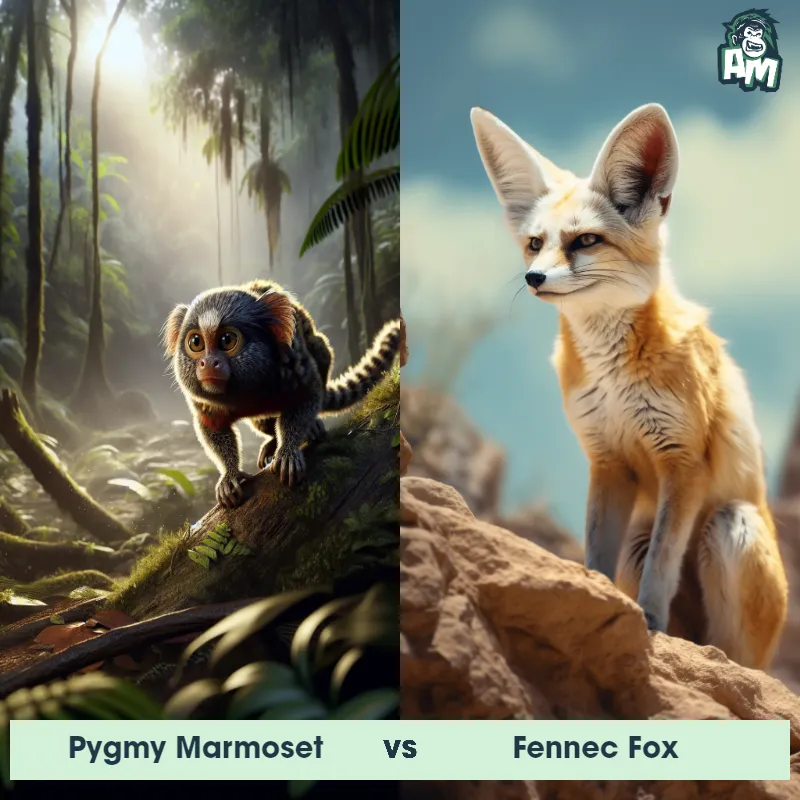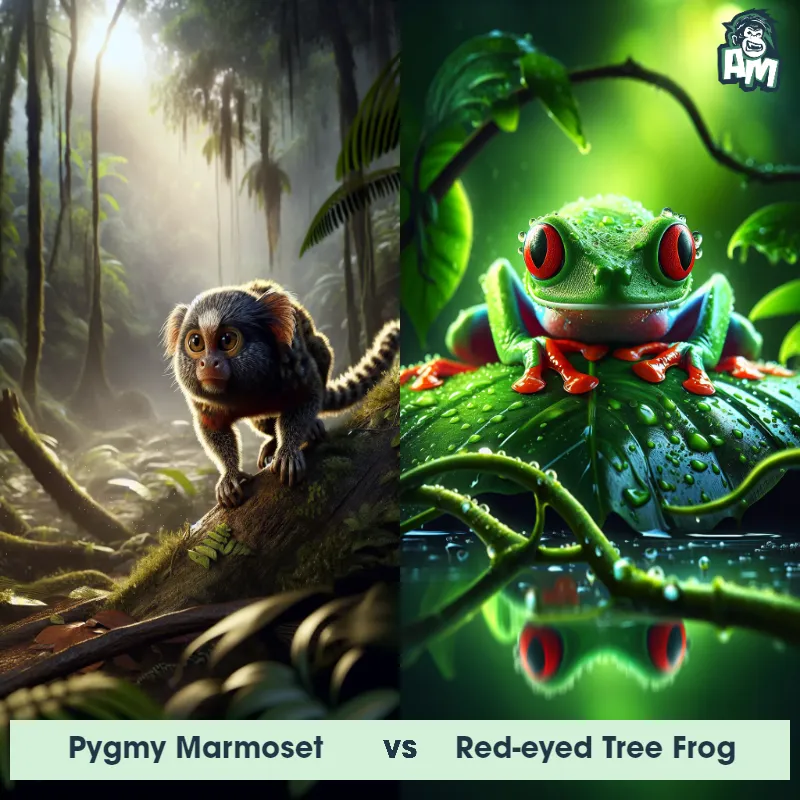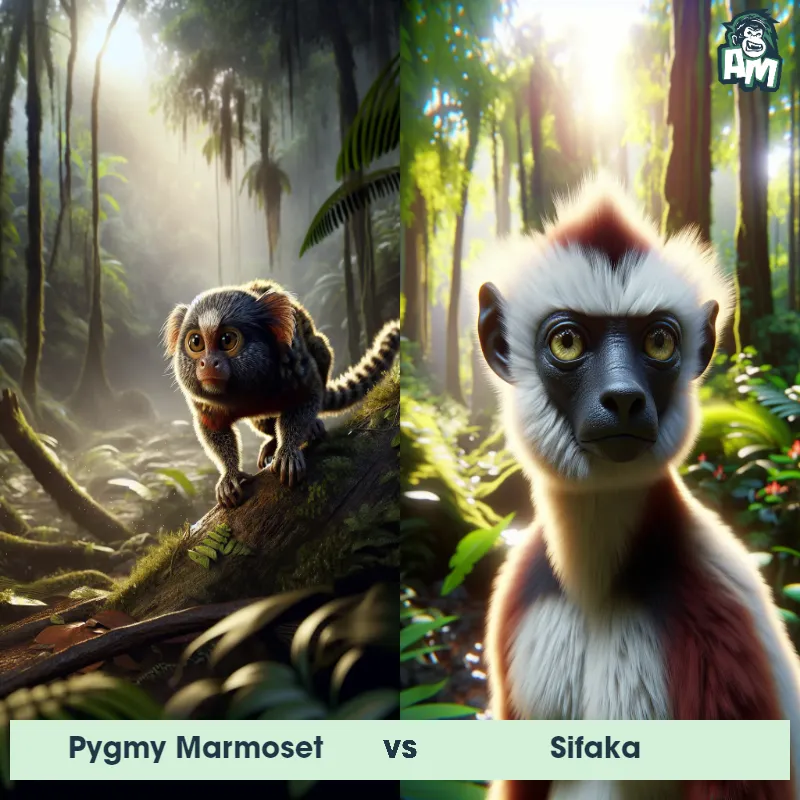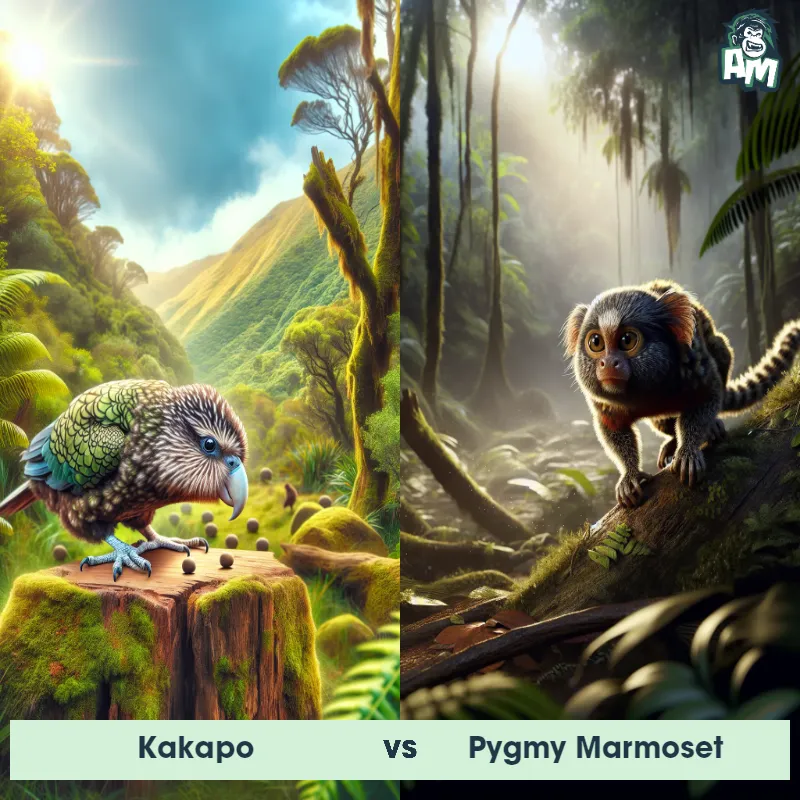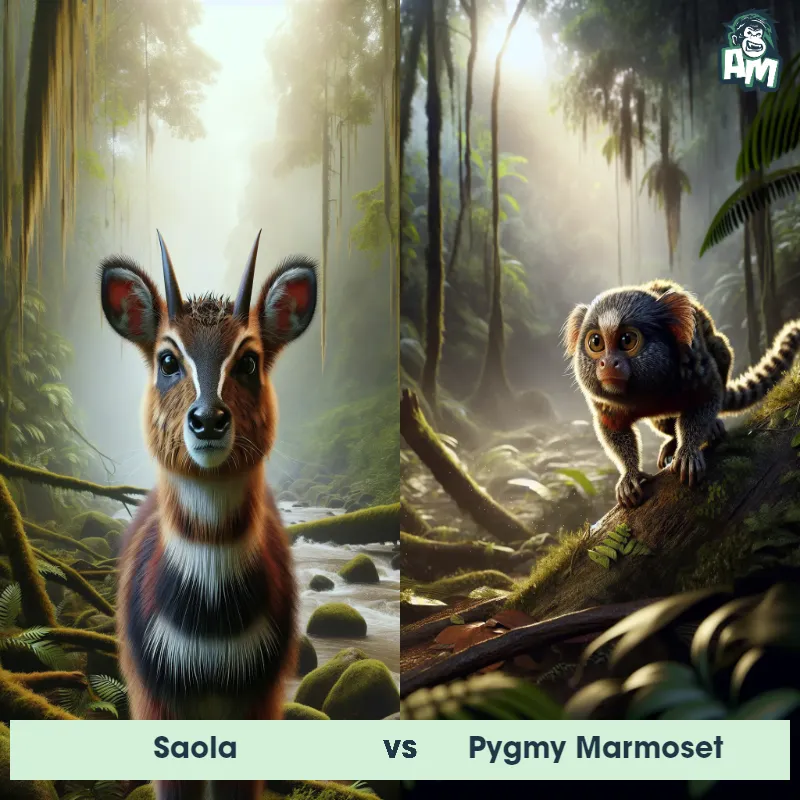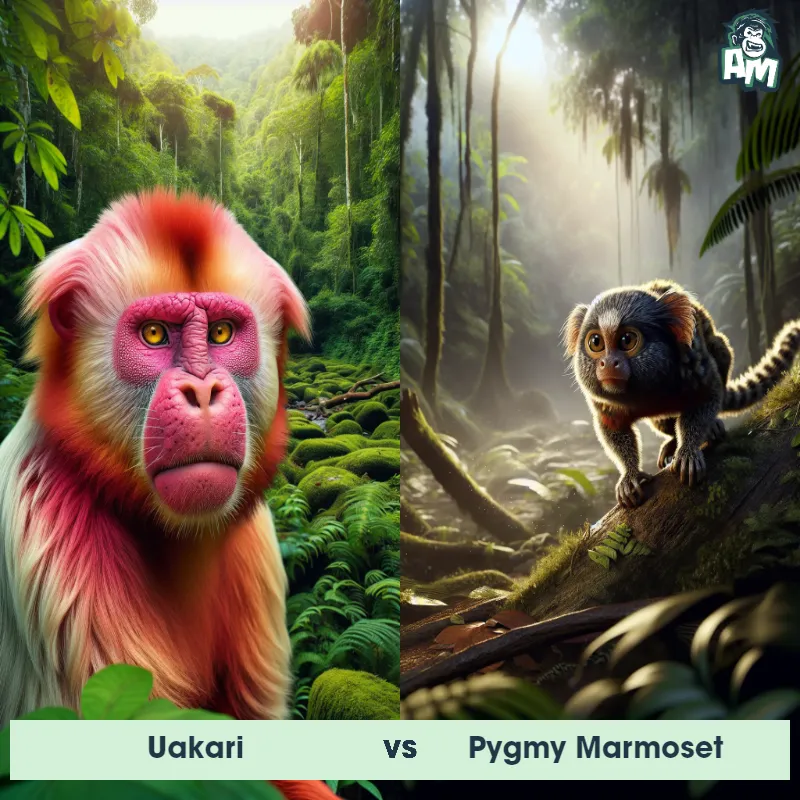The Pygmy Marmoset
The Pygmy Marmoset, also known as the dwarf monkey or pocket monkey, is the smallest species of monkey in the world. They are native to the rainforests of South America, specifically the Amazon basin. With an average length of about 5 to 6 inches and weighing only 3 to 4 ounces, these tiny primates have distinctive features such as their long claws and a characteristic hair tuft on their head. Their fur coloration varies, with shades of brown, gray, and tan, and they have a black facial mask. Pygmy Marmosets are arboreal and are known for their incredible agility, capable of leaping distances of up to 10 feet between tree branches. They primarily feed on tree gum, sap, insects, and fruits, and they live in small family groups consisting of a breeding pair and their offspring, communicating through vocalizations and scent marking.
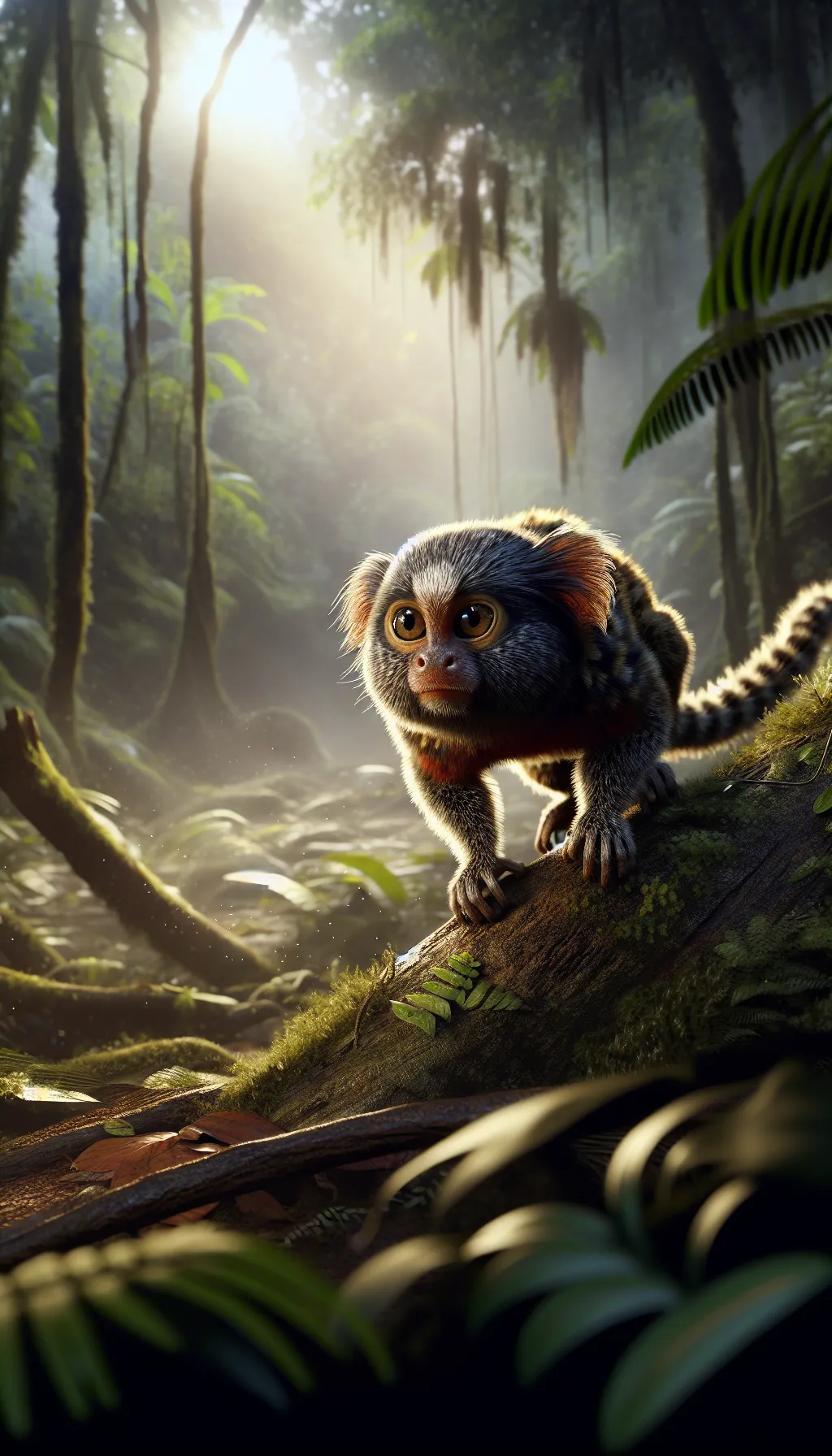
| Pygmy Marmoset | |
|---|---|
| Size | Average height of 4.6 inches (11.7 centimeters) |
| Weight | About 3.5 ounces (100 grams) |
| Speed | 24mph (39km/h) |
| Key Strength | Agility and quickness |
| Biggest Weakness | Lack of physical strength |
| Scientific Name | Cebuella pygmaea |
| Family | Callitrichidae |
| Habitat | Tropical rainforests |
| Geography | South America (Amazon Basin, Peru, Brazil, Ecuador, Colombia, and Bolivia) |
| Diet | Tree gum, tree sap, fruits, insects, and small invertebrates |
| Lifespan | 10 years - 15 years |

The Pygmy Marmoset
The Pygmy Marmoset, also known as the dwarf monkey or pocket monkey, is the smallest species of monkey in the world. They are native to the rainforests of South America, specifically the Amazon basin. With an average length of about 5 to 6 inches and weighing only 3 to 4 ounces, these tiny primates have distinctive features such as their long claws and a characteristic hair tuft on their head. Their fur coloration varies, with shades of brown, gray, and tan, and they have a black facial mask. Pygmy Marmosets are arboreal and are known for their incredible agility, capable of leaping distances of up to 10 feet between tree branches. They primarily feed on tree gum, sap, insects, and fruits, and they live in small family groups consisting of a breeding pair and their offspring, communicating through vocalizations and scent marking.
Fun Fact: One fascinating fact about the Pygmy Marmoset is that they have a unique form of communication known as "trilling." This vocalization involves alternating high-pitched tones that sound similar to a bird's call. Trilling is used by Pygmy Marmosets to maintain contact with each other, signal their location, and strengthen social bonds within their group.
| Pygmy Marmoset | |
|---|---|
| Size | Average height of 4.6 inches (11.7 centimeters) |
| Weight | About 3.5 ounces (100 grams) |
| Speed | 24mph (39km/h) |
| Key Strength | Agility and quickness |
| Biggest Weakness | Lack of physical strength |
| Scientific Name | Cebuella pygmaea |
| Family | Callitrichidae |
| Habitat | Tropical rainforests |
| Geography | South America (Amazon Basin, Peru, Brazil, Ecuador, Colombia, and Bolivia) |
| Diet | Tree gum, tree sap, fruits, insects, and small invertebrates |
| Lifespan | 10 years - 15 years |
Pygmy Marmoset Matchups
We use AI to simulate matchups between the Pygmy Marmoset and other animals. Our simulation considers size, strength, and natural predatory behaviors to determine the most likely outcome.
Pygmy Marmoset: Diet, Predators, Aggression, and Defensive Behaviors
What do Pygmy Marmosets eat?
Pygmy Marmosets primarily feed on tree sap, gum, insects, fruits, flowers, nectar, and small invertebrates. Their diet is mainly composed of sap extracted from trees, which they obtain by gnawing holes in the bark with their specialized teeth.
Do Pygmy Marmosets have any predators?
Yes, Pygmy Marmosets have predators such as snakes, birds of prey, and small carnivorous mammals. Being small and agile, they are vulnerable to being preyed upon by larger animals looking for a quick meal in the rainforest canopy where they live.
Are Pygmy Marmosets aggressive?
Pygmy Marmosets are not known to be aggressive animals. They are social creatures that live in family groups and use vocalizations, scent marking, and grooming to communicate and maintain social bonds within their group.
Do Pygmy Marmosets fight?
Pygmy Marmosets do engage in intra-group conflicts, particularly during breeding season or when competing for resources. These conflicts can involve vocalizations, chasing, and physical displays, but actual physical fights are rare and usually resolved quickly.
How do Pygmy Marmosets defend themselves?
Pygmy Marmosets have several defense mechanisms to protect themselves from predators or threats. They rely on their small size, agility, and camouflage to evade predators in the dense rainforest canopy. Additionally, they can use alarm calls and territorial displays to warn against potential dangers.
What is Pygmy Marmosets' biggest weakness in a fight?
One of the biggest weaknesses of Pygmy Marmosets in a fight is their small size and lightweight build. They lack the physical strength and weaponry to effectively defend themselves against larger predators or aggressive competitors. As a result, they rely more on evasion and alarm calls to avoid confrontations in the wild.
Fun Fact: Incredibly, Pygmy Marmosets have a specialized adaptation that allows them to feed on tree gum. Their lower incisor teeth have a unique structure, with a forward-facing edge that acts like a chisel. This adaptation helps them to easily gouge into tree bark and access the gum and sap, which serves as an important part of their diet.
Fun Fact: Pygmy Marmosets are known for their impressive reproductive capabilities. Female Pygmy Marmosets have a short gestation period of only 140 to 150 days, which is relatively short for a primate. Additionally, they usually give birth to twins, although births of triplets are not uncommon. These tiny infants have excellent grasping abilities, allowing them to cling to their parents' fur from birth. The entire family group actively participates in the care of the young, including feeding and carrying them until they are independent enough to venture off on their own.



